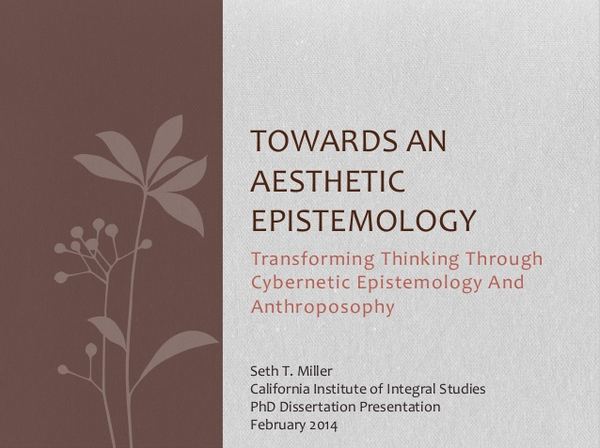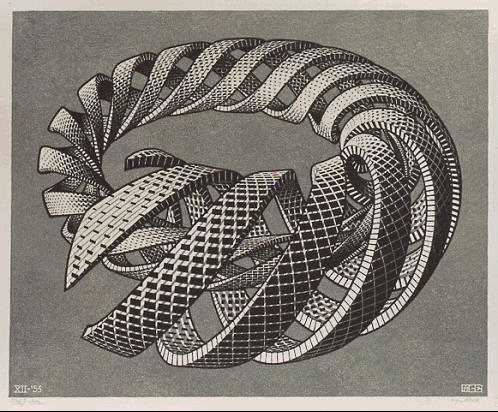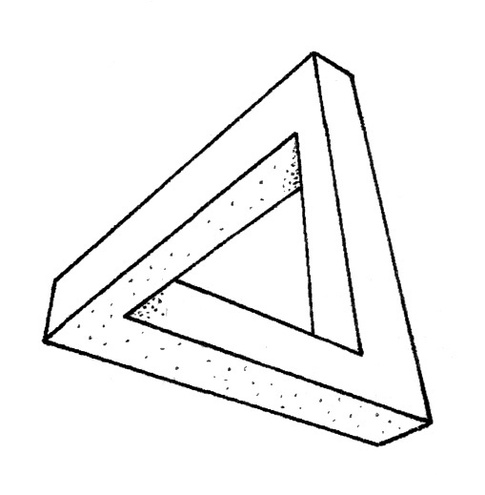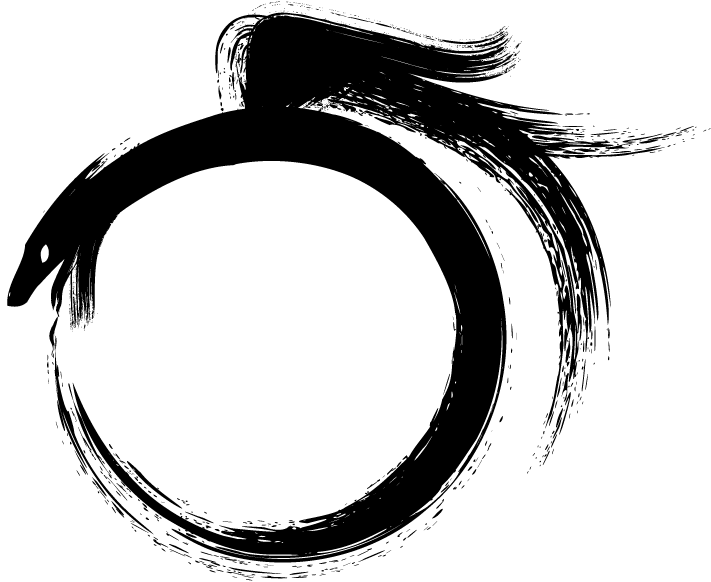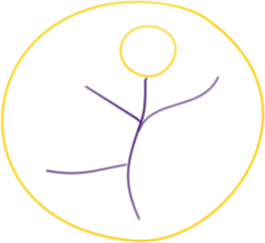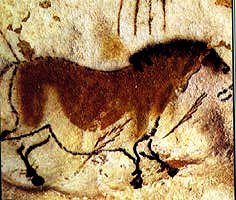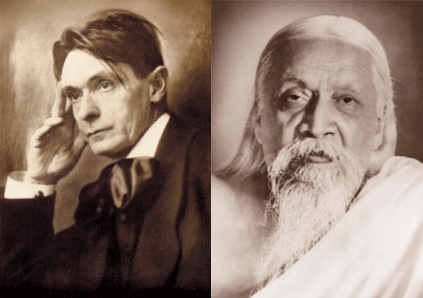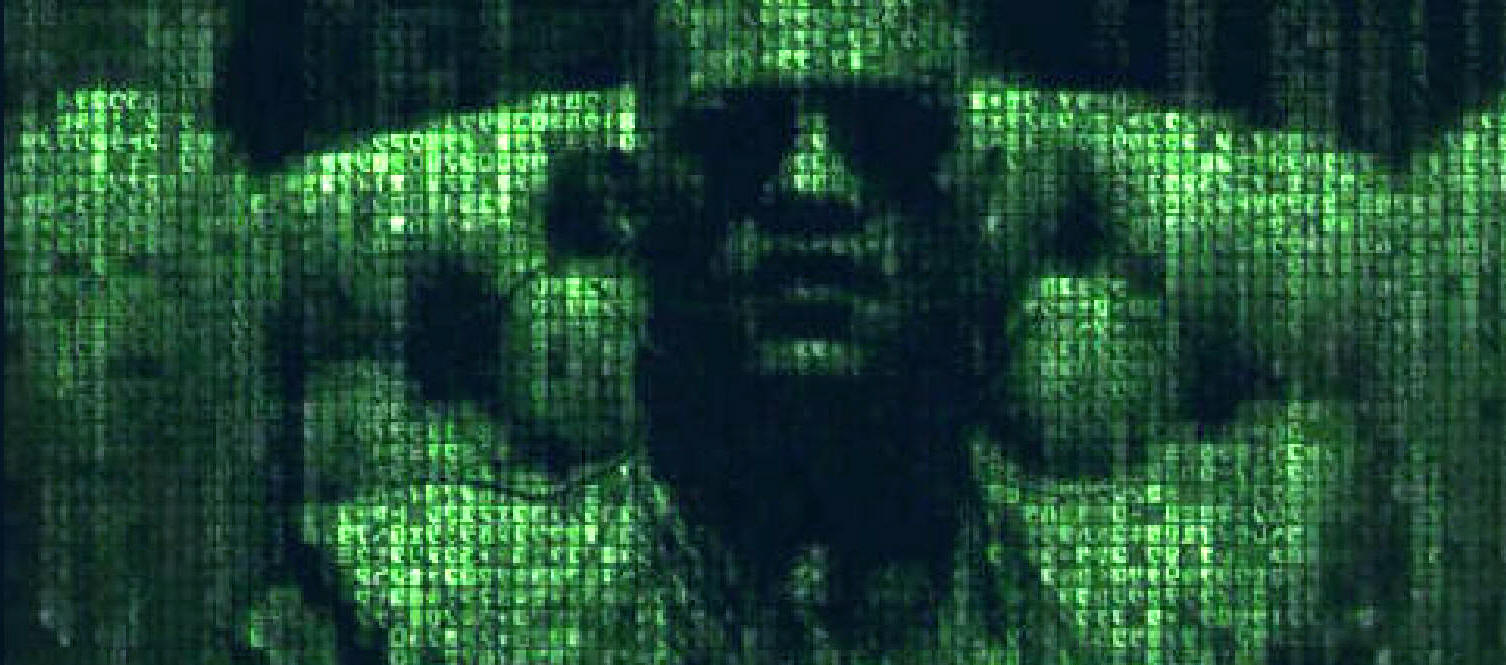Feb
13
2014
In February 2014 I successfully defended my PhD dissertation, titled "Toward an Aesthetic Epistemology: Transforming Thinking through Cybernetic Epistemology and Anthroposophy."
The following is the abstract and a slideshow presentation that pulls out the crux of my arguments.
Abstract
The complexity, subtlety, interlinking, and scale of many problems faced individually and collectively in today’s rapidly changing world...
Aug
06
2013
Let’s get right to it, shall we?
With respect to ontology, let us say that there is no “it,” no independent reality that is exclusive of the observer. This is a basic insight from second-order cybernetics: the observer must always be included in the observed. Despite this, of course, we do have much talk and...
Jun
24
2012
Gregory Bateson (1991) famously said that we “cannot claim to have no epistemology. Those who so claim have nothing but a bad epistemology” (p. 178). Bateson is calling for self-reflection in our epistemology. He wants it to be recursive, so that in our production of knowledge we do not delude ourselves into thinking that...
Sep
06
2011
(New readers will want to start with the first installment.)
We ended the last installment with a recognition that the Laws of Form naturally led GSB to an understanding of both the necessity and importance of the realm of imaginary numbers. We will continue this elaboration.
You are likely familiar with the paradoxical sentence: "This sentence is...
Aug
30
2011
(New readers will want to start with the first installment.)
We ended the last installment having come to realize something of the esoteric significance of the taijitu, or yin-yang, form, in something of an extended tangent. We return now to the text.
GSB himself seemed to understand the importance of the Laws of Form, even if there...
Nov
23
2009
I’m actually somewhat uncomfortable calling Paleolithic renderings “art” – not because they don’t meet some standard set of criterion, but because of the very nature of the ‘calling’ itself seems to go against the experience of the makers of the art. See, there again, an assumption: “the makers of the art”, which includes a...
Aug
16
2009
A cursory Google search (2009) didn't turn up anything promising in regards to comparing Rudolf Steiner and Sri Aurobindo. Hopefully this will help:
Rudolf Steiner and Sri Aurobindo: A Beginning Comparison
Summary:
This longer essay summarizes the basic elements of the spiritual-cosmological worldviews of two of the most important modern, integrative spiritual thinkers: Rudolf Steiner and...
Apr
25
2009
This lecture presentation was given at the East Bay Waldorf School in 2007 (see flyer below). It explores the Matrix trilogy of movies from the perspective of spiritual science. Close attention is paid to the actual events in the "text" of the movies, with an eye towards illuminating features concerning the major characters and...
Jan
10
2009
I have this feeling that appeals to functional equivalence (or even similarity) are somehow, well, disrespectful, or at least intrinsically misleading. Functional appeals 'work' because they abstract very specific relations from an otherwise fully real and completely embedded situation, and show how regardless of how those relations come about, if they do, then for the purposes of...
Jan
02
2009
The following exercise was proposed:
Take the following list, culled from a critique of Ken Wilber's work by philosopher William Irwin Thompson, Coming Into Being and write the opposites.
simplistic
how to fix
compulsive mappings
textbook categorizations
control the universe through mapping
dominant masculinist purposefulness
shift power from the described to the describer
psychic inflation and self-magnification
a grand pyramid with the advocate on top
lacking poetic...
Dec
28
2008
Wow - wandering through Powell's books just turned up this gem - perfect for me! It's a book with an alchemical basis (the chapters are organized by the seven basic alchemical processes), exploring philosophy, science, history, and consciousness...
but what's even better is that the book is very visual and creative. It includes seven paper...


